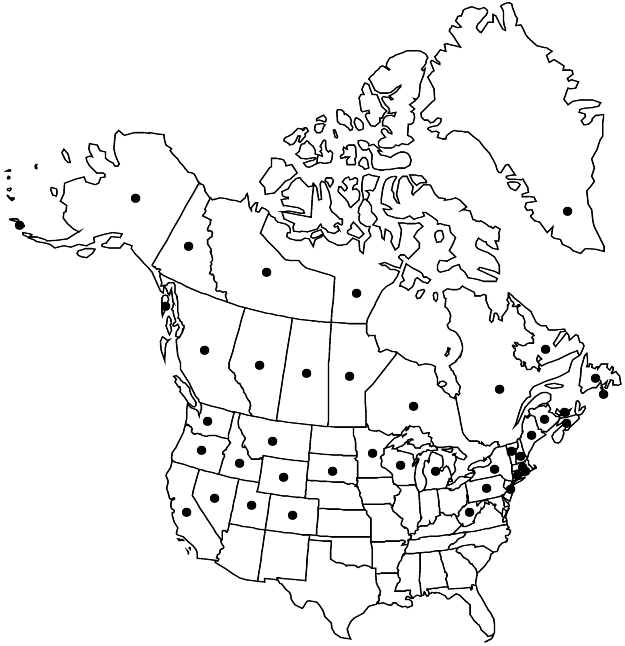Difference between revisions of "Stellaria borealis"
Fl. Boston. ed. 2, 182. 1824.
RevisionBot (talk | contribs) m (Bot: Adding category Revision Pending) |
RevisionBot (talk | contribs) m (Bot: Adding category Revised Since Print) |
||
| (One intermediate revision by one other user not shown) | |||
| Line 67: | Line 67: | ||
|publication year=1824 | |publication year=1824 | ||
|special status=Illustrated | |special status=Illustrated | ||
| − | |source xml=https:// | + | |source xml=https://bitbucket.org/aafc-mbb/fna-data-curation/src/2e0870ddd59836b60bcf96646a41e87ea5a5943a/coarse_grained_fna_xml/V5/V5_206.xml |
|subfamily=Caryophyllaceae subfam. Alsinoideae | |subfamily=Caryophyllaceae subfam. Alsinoideae | ||
|genus=Stellaria | |genus=Stellaria | ||
| Line 77: | Line 77: | ||
[[Category:Treatment]] | [[Category:Treatment]] | ||
[[Category:Stellaria]] | [[Category:Stellaria]] | ||
| − | [[Category: | + | [[Category:Revised Since Print]] |
Latest revision as of 17:10, 6 November 2020
Plants perennial, often matted, rhizomatous. Stems prostrate to ascending or erect, usually diffusely branched, sharply 4-angled, (5–)25–50 cm, glabrous to finely papillate, rarely pubescent. Leaves sessile; blade linear-lanceolate to ovate-lanceolate, rarely elliptic-lanceolate, 1–6 cm × 2–8 mm, base cuneate, margins eciliate or scabrid, sometimes ciliate towards base, apex acute. Inflorescences with flowers solitary, terminal and axillary, or terminal, often copious, very lax, leafy cymes; bracts foliaceous, lanceolate, reduced distally to ca. 2 mm, ± scarious. Pedicels erect or patent, usually reflexed at maturity, 10–40 mm, glabrous. Flowers 3–5 mm; sepals 5, 1–3-veined, lanceolate to ovate, 2–5 mm, margins scarious, apex acute, glabrous; petals 5, rarely absent, white or translucent, 1–3 mm, usually shorter than sepals; stamens 5; styles 3, erect to spreading, 0.9–2 mm. Capsules greenish brown or straw colored, ovoid, 3–7 mm, more than 1–1.5 times as long as broad, exceeding sepals, apex acute, opening by 3 valves; carpophore very short or absent. Seeds 10–20, brown, obovate, 0.7–0.9 mm on longest axis, smooth or slightly rugose. 2n = 52.
Distribution

Alta., B.C., Man., N.B., N.S., N.W.T., Nunavut, Ont., P.E.I., Que., Sask., Yukon, Alaska, Calif., Colo., Conn., Idaho, Maine, Mass., Mich., Minn., Mont., N.H., N.J., N.Y., Nev., Oreg., Pa., R.I., S.Dak., Utah, Vt., W.Va., Wash., Wis., Wyo., Circumboreal.
Discussion
Subspecies 2 (2 in the flora).
Plants infected with an anther smut, Microbotyrum stellariae (Sowerby) G. Deml & Oberwinkler [Ustilago violacea (Persoon) Roussel, in the broad sense], exhibit flowers with enlarged, reddish anthers. This condition is known in both subspecies, especially in northern areas of the range, but is as yet unknown in Stellaria calycantha, a species previously united with S. borealis by some authors.
Selected References
Key
| 1 | Sepals ovate to ovate-triangular, with midvein extending to near apex, lateral veins visible only at base; capsules dark brown, opaque, less than 2 times as long as wide, usually 3-4.5(-5) mm; leaf blades elliptic-lanceolate to narrowly elliptic or linear-lanceolate, widest just below middle, usually 2-3 cm; circumboreal | Stellaria borealis subsp. borealis |
| 1 | Sepals narrowly triangular, with 3 prominent, ridged veins extending to near apex; capsule straw colored, translucent, 2 times as long as wide, usually 5-7 mm; leaf blades narrowly lanceolate, widest near base, usually 3-6 cm; w North America | Stellaria borealis subsp. sitchana |